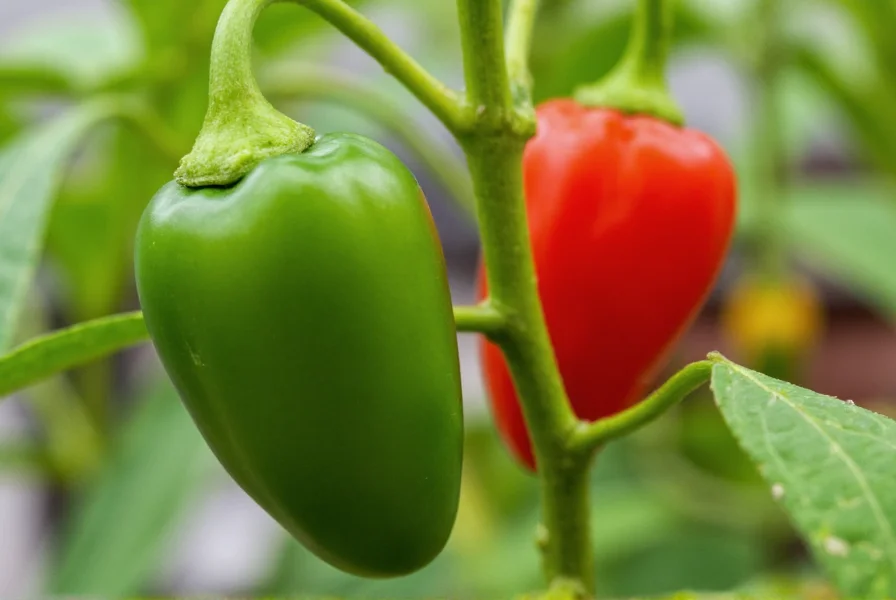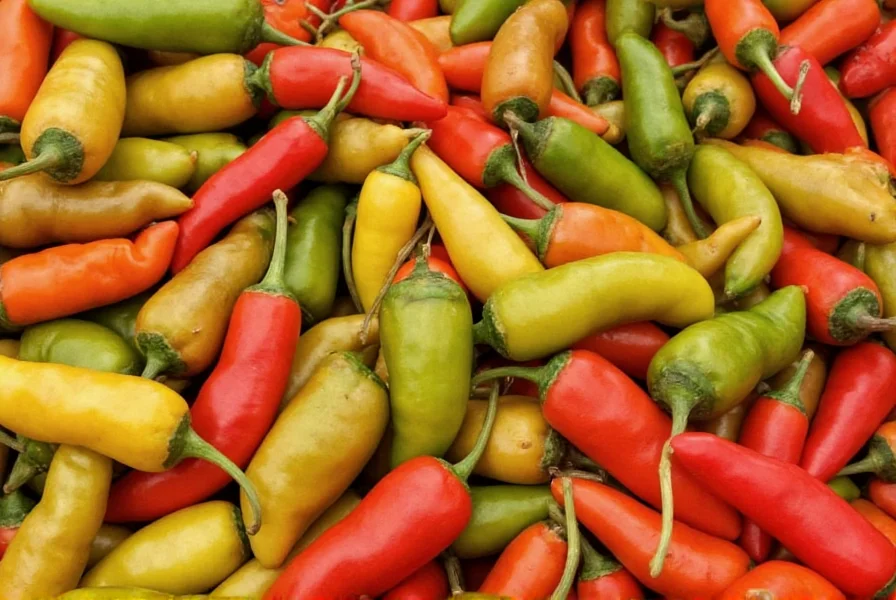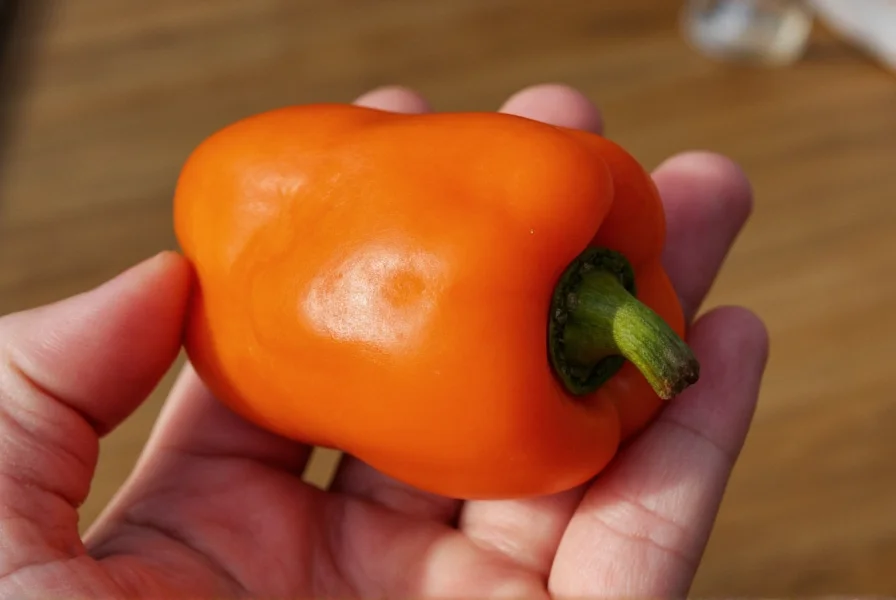The long thin sweet pepper with a person's name you're searching for is the Peter Pepper, a distinctive Capsicum annuum variety known for its unique curved shape and mild heat profile. This heirloom chili pepper measures 2-4 inches long, starts green when immature (with sweet flavor), and ripens to red while developing moderate heat (500-1,000 Scoville units). Unlike most peppers named after places, the Peter Pepper earned its human-name designation from its unmistakable anatomical resemblance.
Among the diverse world of chili peppers, few varieties generate as much curiosity as the Peter Pepper. This unusual cultivar stands out not just for its appearance but for its naming convention—a rare example of a pepper variety bearing what appears to be a person's name rather than a geographical location. While many chili enthusiasts immediately recognize jalapeños (named after Xalapa, Mexico) or poblanos (from Puebla, Mexico), the Peter Pepper represents a fascinating exception to the naming tradition.
Understanding the Peter Pepper's Unique Characteristics
When examining long thin sweet pepper varieties with personal names, the Peter Pepper immediately distinguishes itself through several key features. This heirloom variety typically reaches 2-4 inches in length with a distinctive curved shape that narrows to a pointed tip. The pepper's smooth, glossy skin transitions from bright green to vibrant red as it matures on the vine.
What makes this long thin sweet pepper with a person's name particularly interesting to gardeners and chefs is its evolving flavor profile. When harvested young and green, Peter Peppers offer a mild, slightly sweet flavor comparable to bell peppers—perfect for those seeking long thin sweet pepper varieties for mild cooking. As the peppers ripen to red, their heat increases to a moderate 500-1,000 Scoville units, placing them in the same heat range as poblano peppers but with a more complex flavor.

Historical Origins and Naming Mystery
The history of this long thin sweet pepper with a person's name traces back to 19th century Texas, where it emerged as a natural mutation among other chili varieties. Despite extensive research, the exact origin of the "Peter" designation remains somewhat mysterious, though food historians generally agree it references the pepper's unmistakable anatomical shape.
Unlike most commercial pepper varieties developed for consistent heat or yield, the Peter Pepper has maintained its status primarily as a novelty and heirloom variety. Its persistence in seed catalogs and specialty gardens speaks to its enduring appeal among chili enthusiasts seeking unique long thin pepper varieties for home gardening. The Peter Pepper represents one of the few commercially available peppers named for its appearance rather than its place of origin.
Growing Peter Peppers Successfully
For gardeners interested in cultivating this distinctive long thin sweet pepper with a person's name, understanding its growing requirements is essential. Peter Peppers thrive in warm climates with full sun exposure and well-draining soil. They typically require 70-80 days from transplanting to reach maturity, making them suitable for most temperate growing seasons.
| Growing Factor | Optimal Conditions for Peter Pepper | Notes |
|---|---|---|
| Soil pH | 6.0-6.8 | Slightly acidic to neutral |
| Water Needs | Consistent moisture | Avoid waterlogging |
| Temperature | 70°-85°F (day) | Frost sensitive |
| Harvest Time | 70-80 days after transplant | Harvest green for sweetest flavor |
One crucial tip for those growing this long thin sweet pepper variety: harvest timing dramatically affects flavor. For the sweetest experience comparable to mild long thin pepper varieties for salads, pick peppers when they're still green and immature. Allowing them to ripen to red increases both heat and complexity of flavor, making them suitable for salsas and cooked dishes.
Culinary Applications and Flavor Pairings
The Peter Pepper's dual nature—sweet when green, moderately spicy when red—makes it remarkably versatile in the kitchen. Chefs specializing in heirloom pepper varieties for gourmet cooking appreciate its ability to transition from mild to moderately hot depending on harvest time.
When preparing this distinctive long thin sweet pepper with a person's name, consider these culinary applications:
- Raw preparations: Slice thin for salads or sandwiches when harvested green for maximum sweetness
- Pickling: The firm texture holds up well in vinegar-based pickles, creating a mildly tangy condiment
- Stuffed peppers: The curved shape creates an interesting presentation for cheese or grain fillings
- Salsas and sauces: Use red-ripened peppers for a moderate heat boost in tomato-based sauces
- Grilling: The thin walls cook quickly, developing delicious charred flavors

Comparing Peter Pepper to Similar Varieties
When exploring long thin sweet pepper varieties with distinctive characteristics, it's helpful to understand how the Peter Pepper compares to other options. While many peppers share similar dimensions, few match its unique combination of shape, flavor progression, and naming convention.
The most common confusion occurs between Peter Peppers and Hungarian Wax peppers, which also start sweet and develop heat. However, Hungarian Wax peppers grow significantly larger (6-8 inches) and lack the distinctive curved shape that defines this long thin sweet pepper with a person's name. Similarly, while banana peppers share a similar mild heat profile when young, they lack the Peter Pepper's signature curvature.
For gardeners seeking long thin pepper varieties with mild heat for container gardening, the Peter Pepper's compact growth habit (typically 18-24 inches tall) makes it an excellent choice compared to more sprawling varieties like cayenne peppers.
Finding and Substituting Peter Peppers
Locating this distinctive long thin sweet pepper with a person's name can be challenging outside specialty markets. While not commonly found in mainstream grocery stores, Peter Pepper seeds are increasingly available through heirloom seed companies and online retailers specializing in unique chili pepper varieties for home cultivation.
If you're unable to find fresh Peter Peppers but need them for a recipe calling for this long thin sweet pepper variety, consider these substitution options based on your desired flavor profile:
- For sweet applications (green stage): Banana peppers or mild poblano peppers
- For moderate heat applications (red stage): Hungarian Wax peppers or serranos
- For visual presentation: Curved bell pepper varieties or certain ornamental peppers
When substituting, remember that the Peter Pepper's unique value lies in its combination of shape, size, and flavor progression—no single alternative perfectly replicates all these characteristics. For those committed to experiencing this distinctive long thin sweet pepper with a person's name, growing your own from seed remains the most reliable option.











 浙公网安备
33010002000092号
浙公网安备
33010002000092号 浙B2-20120091-4
浙B2-20120091-4